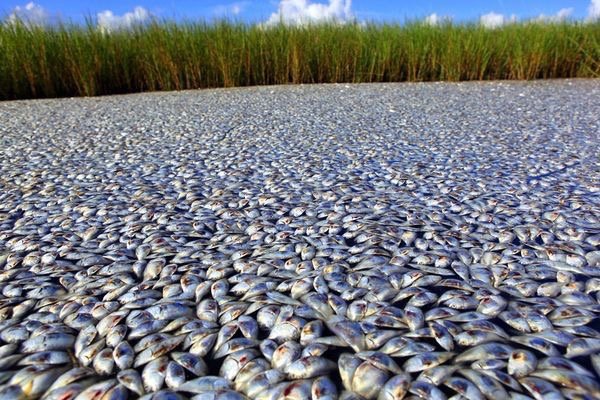A massive fish die off in southeast Florida caused by a dangerous algae bloom has environmental activists crying foul.
There seems to be debate over what exactly has caused what’s known as “brown tide,” a bloom of toxic algae that has been building in the region for several years.
Experts agree the problem stems from decades of pollution, stormwater runoff and fertilizers, but environmental groups such as the Sierra Club are blaming deregulation and especially the sugar industry.
Paul Gray, PhD, an ecologist with Audubon Florida, argues the sugar plantations lining Lake Okeechobee in the Everglades Agricultural Area, which for decades have “pumped wastewater from the fields and into the lake, making it a cesspool of phosphorous and nitrogen,” according to a report by the Sierra Club.
Massive flushes of the lake have caused widespread sea grass and oyster bed destruction, which eventually causes algae blooms like the one currently taking place in the Indian River Lagoon.
“Eventually all that dead seagrass will begin to rot, and we may get a large, toxic algae bloom,” said Tom Van Lent, PhD, the director of science and policy for the Everglades Foundation in the the Sierra Club report posted March 1. That was before the massive fish die-off first reported on March 23.
But other biologists are not as certain of the source.
“It’s not Lake Okeechobee, that’s pretty much certain,” said Ed Phlips, professor of algal physiology and ecology at the University of Florida in an article at Florida Today. “Lake Okeechobee discharges more for the St. Lucie (River). That’s a whole different ballgame down there.”
With thousands of fish from more than 30 species currently washing up as floaters, the catastrophe only stands to get worse as temperatures increase in the Sunshine State.
The state is currently undergoing a “muck removal” process that is attempting to remove nutrient laden soils that are a largely the result of construction project waste material combined with storm runoff. This rotted plant matter blocks sunlight to sea grass and contributes to bacterial decay, which in turn absorbs oxygen leading to fish kills.
One columnist for the Huffington Post was not as diplomatic, calling the problem the result of political corruption that has led to environmental deregulation and an industry run amok.
“Regulation to allow local government to stop phosphorous and nitrogen pollution in Florida waters? State legislature and Gov. Rick Scott voted, no. Protection of coastlines from massive overdevelopment? Absolutely not. Support for the U.S. EPA to regulate contaminants and enforce against violations in Florida? No,” wrote Alan Farago.
Photo credit: Huffington Post








